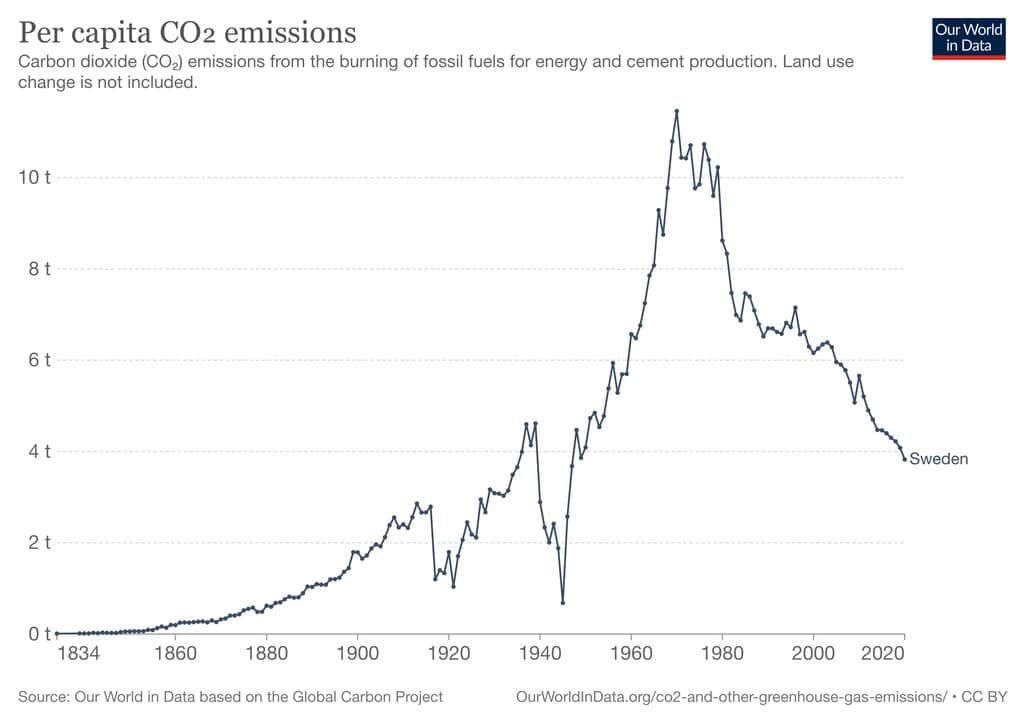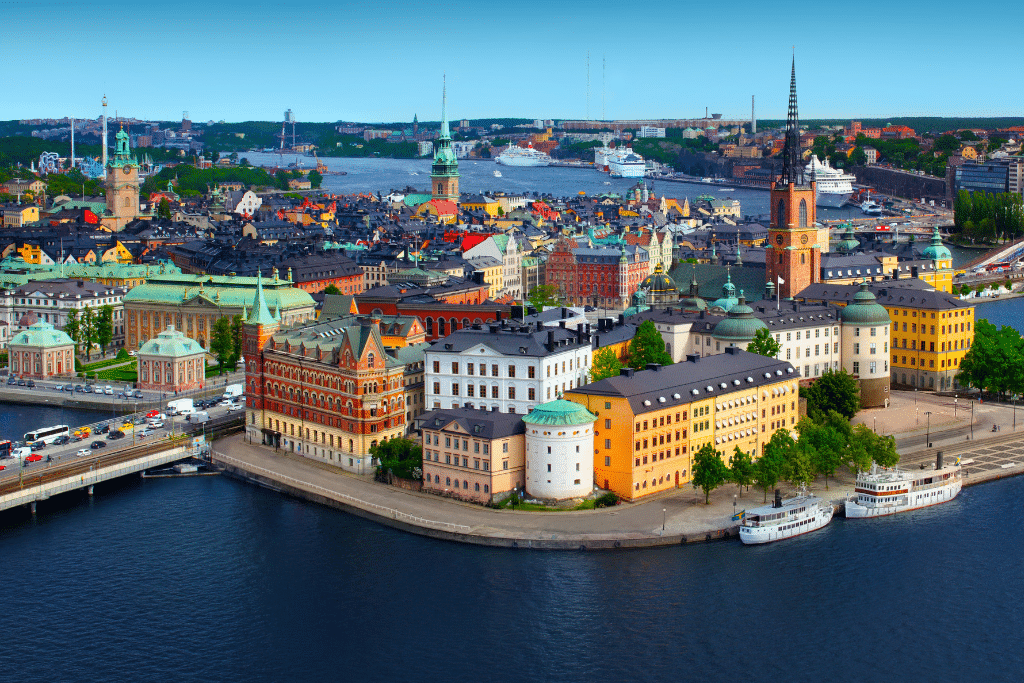Today, landfills take in more than half of the world’s waste worldwide. One of the biggest environmental threats they pose is the production of greenhouse gases such as carbon dioxide and methane, speeding up global warming. Often described as the world’s most sustainable country, Sweden has been setting an example for other nations with its renewable energy generation and emissions reduction. When it comes to waste, Sweden’s solution was a complete revolution of its waste management system. By turning all of its waste to energy, the Scandinavian nation is now able to keep its landfills empty while powering homes and buildings.
—
Landfills are responsible for the release of toxins and harmful substances into the atmosphere. In the US, they are the third-largest source of anthropogenic methane emissions – a gas 25 times more potent than carbon dioxide. Methane alone accounts for nearly 15% of the country’s total emissions and is associated with air and water pollution as well as biodiversity loss and land degradation. At the current rate – a report by the International Solid Waste Association (ISWA) warns – at least 10% of global greenhouse gas emissions will come from the world’s landfills by 2025.
On average, nearly 60% of the world’s waste ends up in landfills. Yet in Sweden, it accounts for just 1%. We explore what makes the country’s recycling system so successful and ways in which the government deals with all of its waste.
Sweden: The World’s Greenest Country
When it comes to net-zero transition leaders, Sweden often immediately comes to mind. The Scandinavian country does not only have the highest renewable energy usage in the European Union – with approximately 56% of the energy coming from renewable sources such as hydroelectric, wind, and nuclear power – but it also has some of the world’s lowest carbon emissions thanks to a shift to electric transportation as well as extensive investments in smart technologies and urban farming. According to the World Bank, every year, the average American releases almost four times as much CO2 into the atmosphere as the average Swede.

Sweden’s CO2 Emissions, 1834-2020. Image: Our World in Data.
But there is another reason why Sweden is often described as the world’s greenest country. Within a few decades, the country has completely revolutionised waste management, drastically increasing its recycling rate and investing in technologies to turn its waste into energy.
You might also like: How Waste Management in Germany is Changing the Game
How Is Sweden Dealing With Its Waste?
Since the 1990s, the Swedish government has implemented a series of effective policies aimed at reducing waste generation, raising awareness among manufacturers and citizens as well as drastically cutting emissions. After passing a policy to make producers responsible for handling all costs associated with the collection and disposal of their products, otherwise known as the Extended Producer Responsibility (EPR), Sweden has targeted households by applying a weight-based waste charge in a bid to incentivise recycling. Furthermore, national laws that ban the landfilling of combustible and organic waste, along with more stringent standards for hazardous waste, landfill, and incineration imposed by the European Union on all its member states allowed Sweden to drastically reduce emissions and total landfill waste. Since 1975, its recycling rate has jumped from 38% to a staggering 99% and the country is now on track to reach its zero-waste goal.
Despite an average of 467kg of waste per person and nearly 4.4 million tons of household waste being produced each year, high public awareness of the benefits of recycling as well as an efficient collection system are the keys to the country’s success. According to the Swedish Waste Management Association, in 2020, 87% of PET plastic bottles and 87% of aluminium cans as well as 61% of all packaging material were recycled. Furthermore, nearly 50% of household waste was turned into energy through an approach known as waste-to-energy (WTE).
The process starts with households and businesses, who filter waste into hazardous and recyclable materials, separating food waste, packaging of metal, plastic, paper and glass, newspapers, electronics, tires, and batteries. To encourage everyone to do their part, Sweden built waste collection stations within 300 metres of all residential areas. While a part of this trash goes into recycling and incinerators, nearly half of it – usually comprising a mixture of energy-rich materials such as paper, plastics, and biomass – is brought to a waste-to-energy facility where it is turned into electricity. Similarly, food waste in Sweden is converted into climate-friendly biogas used to run public buses and heat apartment buildings. But local solid waste is not the only source feeding Sweden’s 34 WTE plants. The country also imports nearly 800,000 tons of waste from the UK, Norway, Italy, and Ireland. These plants currently supply nearly 1.5 million households with heat and approximately 780,000 with electricity – impressive figures considering that the total population of Sweden is around 10 million.
Circular Economy as the Main Strategy for Sweden’s Transition
Circular economy is an extremely effective tool to reduce resource use within a society while simultaneously cutting the environmental impacts that follow from it. Sweden’s recycling efforts as well as its solutions to keep trash out of landfills and instead, convert it into clean energy are not only a smart alternative with a less environmental impact, but they also allow the exploitation of resources that would otherwise be wasted. According to Sweden’s Waste Management Association, despite emitting carbon dioxide and being associated with the release of persistent organic pollutants in the surrounding atmosphere, WTE power plants are still one of the best available technologies for treating and utilising the energy in different residual wastes that are more challenging to recycle. With other European countries such as the UK, Lithuania, Poland, Ireland, and Spain starting to rely on waste-to-energy plants to generate a small part of their energy, Sweden’s successful approach serves as an example of how sustainable solutions can effectively help reach a net-zero economy.
You might also like: Sweden’s Wooden Skyscraper Is the Perfect Example of How Sustainable Buildings Can Tackle Climate Change


















